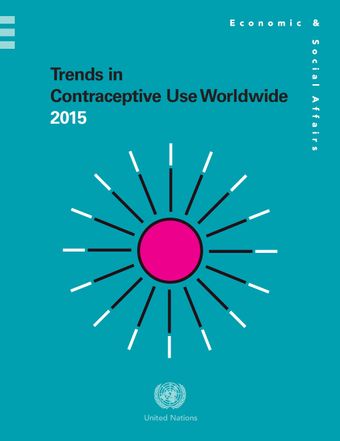Long-term trends since 1970

- Author: United Nations
- Main Title: Trends in Contraceptive Use Worldwide 2015 , pp 14-18
- Publication Date: March 2016
- DOI: https://doi.org/10.18356/c452124e-en
- Language: English
Since 1970 there have been substantial increases in contraceptive use and decreases in the unmet need for family planning, with a few important exceptions. Figure 7 shows time trends in contraceptive prevalence and unmet need for family planning for the world and for regions where unmet need was estimated to be high (around 20 per cent or more) in 1970. The markers in each trend line represent the intersection of contraceptive prevalence and unmet need for family planning levels at six time points (in order): 1970, 1980, 1990, 2000, 2010 and 2015. Generally, as total contraceptive prevalence increases unmet need decreases, except when contraceptive prevalence is starting from very low levels (less than 20 per cent). As new norms about family planning and family size start to take hold, demand for family planning can outpace the availability and use of contraceptives, and thus unmet need for family planning can remain stable or even increase. As more women use contraception and family planning information and services expand to meet demand, unmet need for family planning begins to decline.
-
From This Site
/content/books/9789210577755c006dcterms_title,dcterms_subject,pub_keyword-contentType:Journal -contentType:Contributor -contentType:Concept -contentType:Institution105

